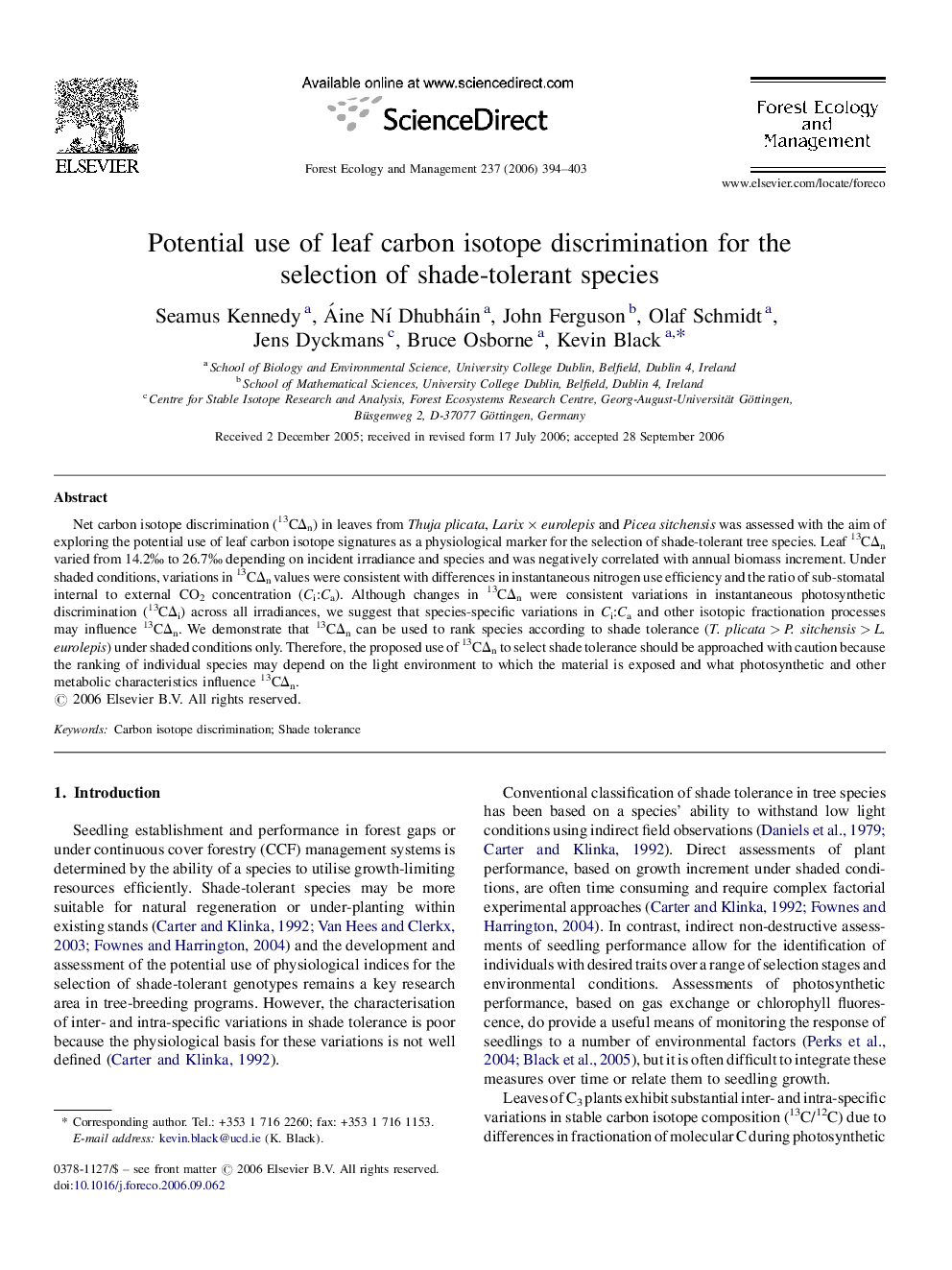| Article ID | Journal | Published Year | Pages | File Type |
|---|---|---|---|---|
| 89970 | Forest Ecology and Management | 2006 | 10 Pages |
Net carbon isotope discrimination (13CΔn) in leaves from Thuja plicata, Larix × eurolepis and Picea sitchensis was assessed with the aim of exploring the potential use of leaf carbon isotope signatures as a physiological marker for the selection of shade-tolerant tree species. Leaf 13CΔn varied from 14.2‰ to 26.7‰ depending on incident irradiance and species and was negatively correlated with annual biomass increment. Under shaded conditions, variations in 13CΔn values were consistent with differences in instantaneous nitrogen use efficiency and the ratio of sub-stomatal internal to external CO2 concentration (Ci:Ca). Although changes in 13CΔn were consistent variations in instantaneous photosynthetic discrimination (13CΔi) across all irradiances, we suggest that species-specific variations in Ci:Ca and other isotopic fractionation processes may influence 13CΔn. We demonstrate that 13CΔn can be used to rank species according to shade tolerance (T. plicata > P. sitchensis > L. eurolepis) under shaded conditions only. Therefore, the proposed use of 13CΔn to select shade tolerance should be approached with caution because the ranking of individual species may depend on the light environment to which the material is exposed and what photosynthetic and other metabolic characteristics influence 13CΔn.
